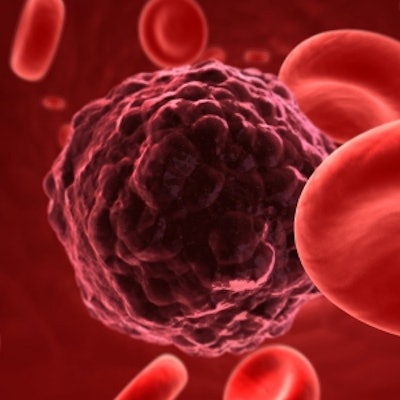
While cancer survival rates are generally increasing worldwide, there are still wide and persistent disparities between countries, particularly for some childhood cancers, according to a large study of population-based survival trends published on Tuesday in Lancet.
Led by Claudia Allemani, PhD, from the Cancer Survival Group at the London School of Hygiene and Tropical Medicine in the U.K., the CONCORD-3 study analyzed individual patient records from 322 cancer registries from 2000 to 2014 in 71 countries and territories.
The researchers compared the five-year survival rates from diagnosis for more than 37.5 million adults (15-99 years old) and children (0-14 years old) with one of 18 common cancers. This group of patients represented 75% of all cancers diagnosed in the world between 2000 and 2014. CONCORD-3 is the follow-up to CONCORD-2, which studied cancer survival rates worldwide for 10 cancers from 1995 to 2004.
Highest survival rates
After taking into account international differences in the age profile of cancer patients and the risk of death from other causes, the researchers found that survival for most cancers has been consistently high over the past 15 years in eight countries: the U.S., Canada, Australia, New Zealand, Finland, Norway, Iceland, and Sweden (Lancet, 30 January 2018).
For example, women diagnosed with breast cancer in the U.S. and Australia between 2010 and 2014 had a five-year survival rate of 90%, compared with 66% for women diagnosed in India. The five-year breast cancer survival rate has increased to at least 85% in 16 countries in Europe, including the U.K. The lowest survival rate (71%) was in Eastern Europe, including Russia.
The researchers noted that overall cancer survival rates were improving in the U.K., with several cancers showing substantial increases in rates between 2000 and 2014.
| U.K. cancer survival rates, 2000-2014 | ||
| Cancer type | 2000-2004 | 2010-2014 |
| Breast | 80% | 86% |
| Prostate | 82% | 89% |
| Rectal | 55% | 63% |
| Colon | 52% | 60% |
These gains reflect better cancer management, according to the authors. On the downside, though, adults in the U.K. continue to have lower five-year survival rates than in comparable countries for several common cancers, including brain cancer and myeloid malignancies such as acute myeloid leukemia.
Liver, lung, pancreatic cancers
Liver and lung cancers remained rapidly lethal in both high- and low-income countries, even though there has been some important progress in five-year survival in several nations. Four countries experienced an increase in liver cancer survival rates by more than 10% over 20 years:
- South Korea (11% in 1995 to 27% in 2014)
- Sweden (5% in 1995 to 17% in 2014)
- Portugal (8% in 1995 to 19% in 2014)
- Norway (6% in 1995 to 19% in 2014)
Lung cancer survival increased by 5% to 10% between 1995 and 2014 in 21 countries, including the U.K. (7% to 13%). The most progress was seen in South Korea (10% to 25%), China (8% to 20%), and Japan (23% to 33%).
There has been no improvement in pancreatic cancer, however, with five-year survival rates typically remaining at less than 15% around the world.
Childhood cancers
Differences in childhood brain cancer survival rates are particularly wide, ranging from less than 40% during 2010 to 2014 in Brazil and Mexico to around 80% in Sweden, Denmark, and Slovakia. Although most counties have increased their survival rates since the mid-1990s, the five-year survival rate for children diagnosed with the most common type of childhood cancer -- acute lymphoblastic leukemia -- also varies substantially worldwide.
Survival rates are higher than 90% in several countries -- including the U.S., Canada, and nine European countries -- but remain below 60% in China, Mexico, and Ecuador. This indicates major deficiencies in the diagnosis of a disease that is generally considered to be curable, according to the researchers.
Better data required
The authors also called for cancer registries to be given adequate resources to register all patients and to link the registry data to up-to-date death records.
Despite more than 20 years of advocacy for national and international funding to support the establishment of fully functional cancer registries, both domestic and global political support and funding remains woeful, said Dr. Richard Sullivan, PhD, from the King's Health Partners Comprehensive Cancer Center in London, in a linked comment on the study.
The authors noted that the Organization for Economic Co-operation and Development (OECD) is now using the CONCORD survival estimates to compare the performance of health systems in 48 countries worldwide. However, survival estimates in some parts of the world are limited by incomplete data and legal or administrative obstacles to updating cancer records with death dates. For example, survival trends could not be systematically assessed in Africa, as up to 40% of records contained incomplete follow-up data, according to the researchers.
Continuous monitoring of global trends is crucial for assessing the overall effectiveness of health systems worldwide and to help policymakers plan better cancer control strategies, Allemani said. Governments must recognize cancer registries as efficient, low-cost public health instruments that produce a continuous stream of valuable information on both the impact of cancer prevention strategies and the effectiveness of health systems, she added.
"In Europe, the cost of registering one case is less than the cost of a chest x-ray, and without this kind of information, health ministries are flying blind on cancer control," she said.


















